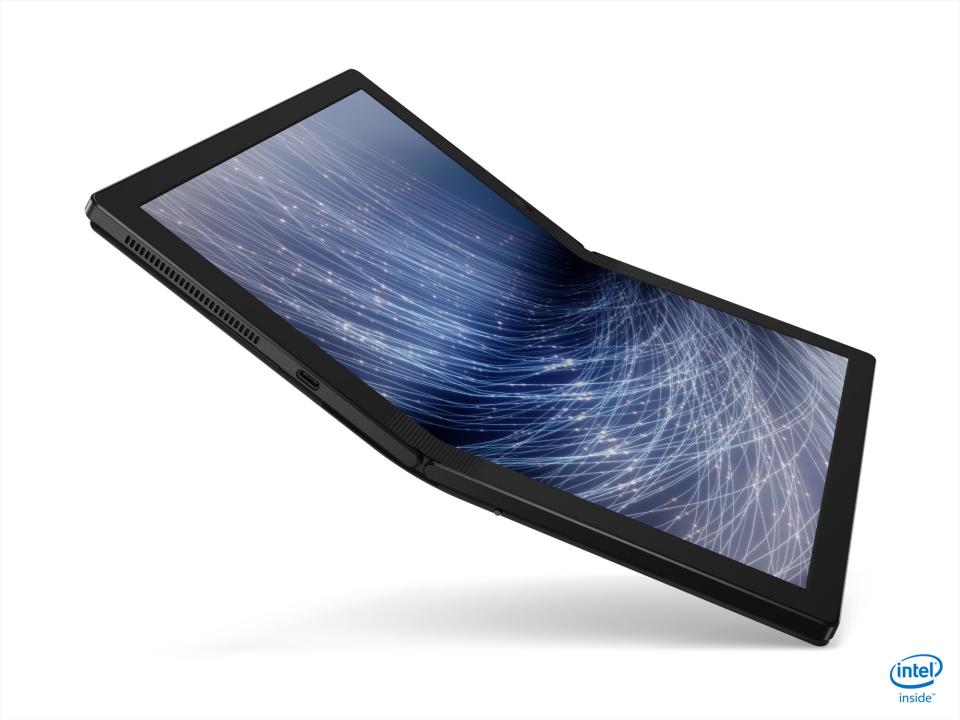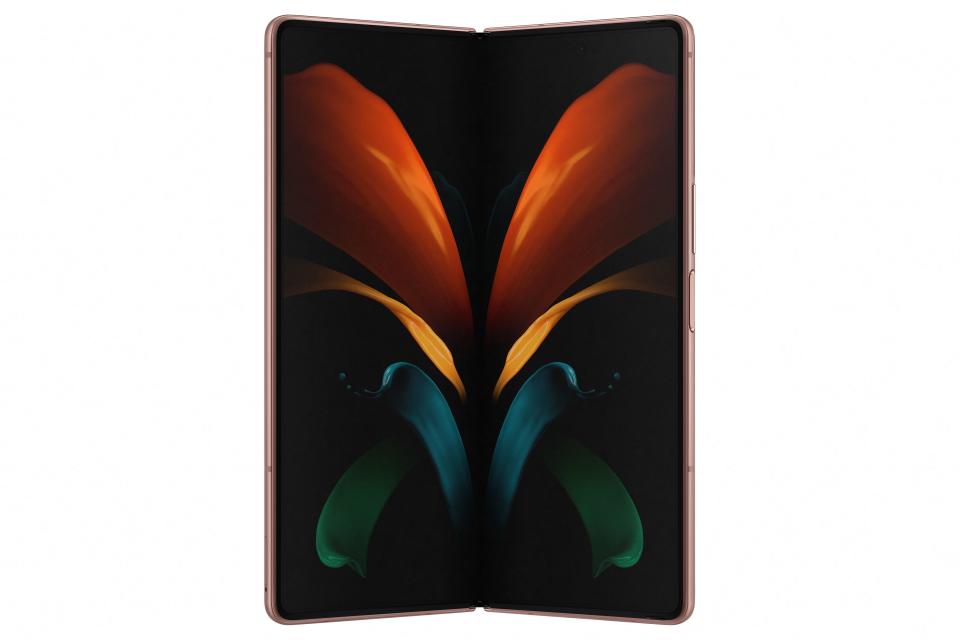Foldable tech is finally here: Will you bend toward the Lenovo ThinkPad X1 Fold or the Samsung Galaxy Z Flip 5G?
While 2020 has been a lousy year by most accounts – a global pandemic and ensuing financial strain, natural disasters, and civil unrest spurred by police violence and anti-Black racism – it hasn’t been such a bad year for tech and innovation.
Zoom and other video platforms helped tens of millions of us virtually connect, for free. We saw the proliferation of 5G networks, a smartwatch that can monitor your blood-oxygen levels, and SpaceX sent its first (and then second) crewed flight to the International Space Station for NASA.
Another tech milestone: foldable tech is officially a “thing.”
It may seem like science fiction, but a (small) handful of foldable devices are now available, each featuring a stunning OLED touchscreen you can collapse or open on demand to suit your needs.
Lenovo, for example, has introduced the first foldable PC, dubbed the ThinkPad X1 Fold. When closed, it resembles a standard book, making it easy to tote around. When opened, it’s a full 13.3-inch Windows PC you can prop up on its kickstand to create or consume content.
Smartphone or tablet?: Either way, Samsung Galaxy Z Fold2 might be for you
Foldable future: With designs like Galaxy Z Fold 2 and Microsoft Surface, time to rethink mobile devices
This product won 43 CES awards at the 2020 Consumer Electronics Show, according to Lenovo.

Samsung, on the other hand, offers a pair of foldable smartphones: the Galaxy Z Fold2 5G, the follow-up to last year’s inaugural device, and the Galaxy Z Flip 5G, which marks the return of the “flip phone,” but with a modern twist.
In September, Royole Corp. announced its second-generation foldable smartphone, the Royole FlexPai 2, but only available in China at this time.
Advantages of foldable tech
Foldable tech might deliver the best of both worlds.
“People like big screens, but they don’t necessarily like a big size,” explains Tim Bajarin, technology analyst and president of Creative Strategies, a market research firm in San Jose, California. “This is what we fundamentally found in our research on portability and mobility.”
“While portable, a laptop is not a ‘go with you anywhere’ product, saidBajarin, “which is why the X1 Fold offers a fascinating design.” If done right, a foldable product means there is “no compromise, as it’s like a regular laptop yet one-half the size,” he added, in a telephone interview with USA TODAY.
Similarly, Samsung’s smartphones are small enough to slip into a pocket or purse when not in use but can be expanded to a larger device on its hinge.
Sascha Segan, PCMag’s lead mobile and 5G analyst, confirms the appeal of foldable phones like the Galaxy Z Fold 2 5G: “People want bigger and bigger screens, but our hands and pockets aren't increasing in size.”

“True foldables like the Galaxy Z Fold 2 5G square that circle by giving you something you can still hold and carry, which expands when needed,” added Segan, in an email quote provided to USA TODAY. “The question is whether the display makers can produce durable, foldable screens in large numbers.”
On the appeal of foldable tech, Bajarin believes tech brands also like showcasing its innovation – and consumers like showing it off as a kind of “status symbol.”
“Companies do it to show their technological prowess, and to a degree, they are as a kind of ‘look what we can do,’” Bajarin said. “If you can nail the hinges, for example, getting them to consistently fold properly, you prove you have incredible engineering skills.”
Foldable tech appeals to early adopters with deep pockets, explains Bajarin, especially among “highly mobile techies who want to show they’re in the know, as a kind of ‘executive jewelry’,” he adds.
Shortcomings of foldable tech
As with most new-to-market technology, foldable tech comes with a premium price – making it inaccessible for most pocketbooks.
The Lenovo ThinkPad X1 Fold sells for $2,499, for example, which is considerably more than most other laptops on the market.
Without a trade-in, which is heavily suggested on the Samsung website, the Galaxy Z Fold2 5G costs $1,999, while the Galaxy Z Flip 5G is $1,449.
Even with eventual mass production and “economy of scale” consideration, some are skeptical prices will be attractive enough for the everyday consumer.
“Foldable devices are expensive because the screens are difficult to produce right now, and I don't know whether the display makers will get past that hurdle,” suggested Segan. “The cost of the displays and hinges will make the real difference between this being a flashy niche technology and something mainstream.”
Durability, including long-term “wear and tear,” is also a concern among many. Even before it went on sale to consumers, Samsung’s first Galaxy Fold phone was recalled by the Korean company after a small handful of tech reviewers reported varying issues with the device.
PCMag's hardware analyst, Tom Brant, agrees the X1 Fold is an “innovative concept,” but foldable PCs “in general still face a few key issues to iron out if they’re going to become mainstream,” he wrote in an email quote for USA TODAY.
In a CES 2020-related piece for PCMag, Brant says the popularity of these devices may “hinge” on price and “depends largely on the quality of the foldable-screen and dual-screen laptops that Lenovo's competitors are working on.”
Brant is more optimistic about the near-future of foldable phones than PCs. “In the meantime, foldable phones are leading the way, with elegant designs like the Samsung Galaxy Z Fold 2 fixing many of the flaws of earlier efforts.” “The Z Fold 2 is the first foldable screen we actually feel comfortable recommending.”
USA TODAY readers, have (or will) you pick up a foldable device? Why or why not?
Follow Marc on Twitter: @marc_saltzman. Email him or subscribe to his Tech It Out podcast at marcsaltzman.com/podcasts.
This article originally appeared on USA TODAY: Foldable tech is here: Lenovo ThinkPad X1 Fold, Samsung Galaxy Z Fold2

 Yahoo Movies
Yahoo Movies 